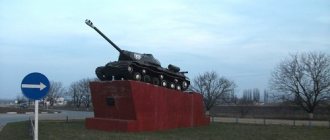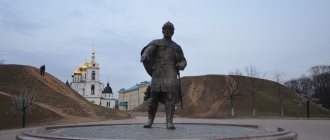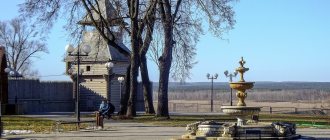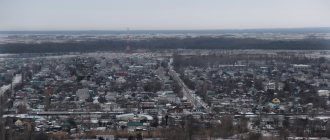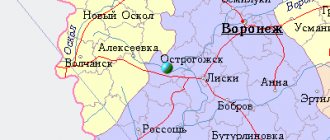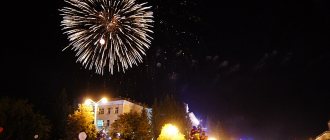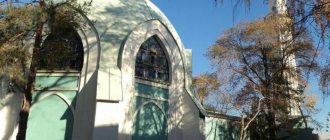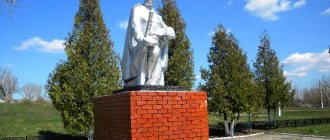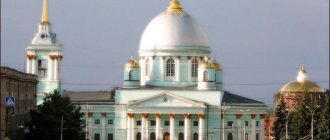Aleysk. History and sights
Aleysk is a city in the Altai region of Russia. The administrative center of the Aleysky district, which it is not part of. The city of Aleysk forms the urban district as the only populated area within it. By order of the Government of the Russian Federation in 2014, it was included in the number of single-industry towns in which there are risks of deterioration in the socio-economic situation. Founded in the mid-18th century as the village of Aleiskaya; The name comes from the hydronym of the Alei River.
City `s history
125 km southwest of Barnaul, on the eastern outskirts of the Priob plateau, in the valley of the Ob tributary of the Alei River, there is a city of regional subordination - Aleysk. Its history as a settlement dates back to 1939, when the Aleiskaya railway station was founded in this area, near the ancient village of Maloponyushevo. But the Russian population began to settle in this area much earlier than the appearance of railway traffic in Altai. In the local territories that were transferred to the Muscovite kingdom in the 17th century, settlements of Russian peasant settlers, artisans and Cossacks quickly began to appear.
In the early stages of the Russian development of Altai, fugitives also made their contribution to replenishing the demographic treasury of the Alei land, who, for various reasons, were unable to get along in the central provinces of the Moscow state. For a long time, the development of the village of Maloponyushevo, as well as its neighboring Bolsheponyushevo, was influenced by the fact that it was in this area that the two most important transport routes of that time passed - the postal route connecting Zmeinogorsk and Barnaul, and the ore hauling route leading from the Kolyvano-Voznnesensky mines. The landscape and geographical advantages of this area were also appreciated by the designers of the railway designed to connect Siberia with Turkestan. As a result, a railway station was built in 1913, which later served as the core for the future city of Aleysk, which absorbed the neighboring village of Maloponyushevo in the process of its development and growth. The station village, which received a powerful impetus for development in the form of the country's dynamically developing railway industry, quickly turned into an important transport and economic hub of the region.
In 1924 it received the status of a regional center, in 1936 it became a workers' village, in 1939 it was classified as a city of regional subordination, and since 1965 - a regional one. From the beginning of the 20s to the end of the 70s of the last century, the city’s population grew rapidly: over 60 years, the population of Aleysk grew 104 times (300 inhabitants in 1920 and 31,300 in 1979). In Soviet times, the foundations for the future agro-industrial specialization of the city were laid. The first mechanized creamery in Siberia, a meat processing plant, a sugar plant, a mill, a bakery, a flax plant, a metal plant, an automobile repair plant were built. Telegraph and telephone communications appeared.
Today, the city of Aleysk has about 28 thousand residents, and it still retains the status of a major regional center of the processing industry. The city has secondary schools, branches of universities, a local history museum, retail chains and catering establishments, branches of Sberbank of Russia, etc.
Under martial law
Modern Aleysk is completely unthinkable without the military. The employees themselves and their town are an integral part of it. For the first time, a military unit was located in Aleysk in 1964. Until 2001, the Guards Lvov-Berlin Order of Kutuzov and Bohdan Khmelnitsky missile formation was stationed here. In the second half of 2001, it was replaced by the four-time decorated Volgograd-Kiev Guards Motorized Rifle Division. Today, the 35th separate motorized rifle brigade has been deployed in Aleysk, in which both conscripts and military personnel serving on a contract basis serve.
Back in Soviet times, a military town was built on the territory of Aleysk: not only barracks, but also multi-storey housing, kindergartens, a large school, an Officers' House, a sports complex, a boiler room and all utility networks. “It was a state within a state, the residents of the town could not leave its borders for weeks, everything was there,” recall old residents of the city.
And today the military plays a significant role in the life of the city, providing it with economic stability and promoting the development of the consumer sphere. In accordance with federal legislation, part of the social institutions of the military camp was recently transferred to the balance of the city.
City climate
The climate is moderately cold, according to the Köppen climate classification - a humid continental climate (Dfb index) with uniform moisture and warm summers. Significant rainfall, even during the dry months it often rains. Winter is cold and long. The coldest month is January with an average temperature of −15 °C. The warmest month is July with an average temperature of +20 °C. Annual precipitation: 478 mm.
The absolute minimum temperature (-46.5 °C) was recorded on January 7, 2001. The absolute maximum (+41.6 °C) was recorded on July 5, 1997.
Location and transport of the city
Aleysk is connected to other cities and regions by highways and railways. The largest highway passing through the city is the federal highway A-349, connecting Barnaul and Rubtsovsk. A network of paved highways, also passing through Aleysk, stretches across the territories of neighboring districts, being significant arteries of the region’s transport infrastructure. There is a regular bus service with the regional capital and neighboring regional centers. The Aleysk railway station is a large cargo-passenger junction of the West Siberian Railway. There are electric trains from Barnaul to Aleysk, and you can also get from one city to another by long-distance trains (Novosibirsk - Bishkek, Novosibirsk - Tashkent, Novosibirsk - Alma-Ata, etc.). Through Aleysk, such neighboring districts as Ust-Kalmansky, Ust-Pristansky, Charyshsky have access to the railway.
Economy of Aleysk
Aleysk, located among large agricultural areas, is the center of the processing industry. There is a full cycle of processing agricultural products. The largest enterprise is CJSC "Aleyskzernoprodukt" named after S. N. Starovoitov, which is engaged in flour-grinding and cereal production, production of vegetable oil and animal feed.
Other large enterprises of the city:
- OJSC "Aleysky Meat Processing Plant" - production of meat products
- JSC "Aleysky Butter and Cheese Plant" - production of dairy products and cheese
- JSC Aleiskaya PMK OJSC "BVS" - production of concrete products for use in construction
Recycling Center
The first, at that time large processing enterprises were built in Aleysk just 13-18 years after the formation of the settlement. In 1926, a steam-powered creamery began operating. In 1928, they began to build an elevator and grain warehouses, a year later - a mill, and by 1932 a milling plant with a capacity of 5 thousand tons of products per year was operating at full capacity in Aleysk.
In the mid-1920s, the country's leadership raised the question of the possibility of cultivating sugar beets in Altai. The first plantings of the crop were made near Aleysk, and the harvest turned out to be good. And at the beginning of 1928, construction began on the first sugar factory in Siberia and the Far East. On November 1, 1931, it produced its first products. In those years, the enterprise processed 340 tons of beets and produced 31 tons of sugar.
Aleysk has been able to maintain its industry specificity to this day. A creamery, a meat processing plant, and a bakery are still operating here today, and the products of the Aleyskzernoprodukt enterprise are known to consumers living far beyond the region and even the country. Only the sugar factory stopped working, whose management was unable to cope with economic difficulties.
Sights of Aleysk
For tourists who come to the city of Aleysk for the first time, it is worth visiting two monuments that were erected in memory of those killed in military conflicts and the victims of the Chernobyl disaster, and also visit the Memorial of Glory. It is also worth going on an excursion to a local history or local history museum. And while walking the streets, it is impossible not to notice beautiful carved animal sculptures or wonderful metal and wooden various sculptures.
Railway station Aleiskaya station
The local station is also a historical monument. 125 km southwest of Barnaul, on the eastern outskirts of the Priobsky plateau, in the valley of the Ob tributary of the Alei River, there is a city of regional subordination - Aleysk. Its history as a settlement dates back to 1939, when the Aleiskaya railway station was founded in this area, near the ancient village of Maloponyushevo. The history of Aleysk is directly connected with the railway. The city's train station is a historical monument built in 1914. There are memorial plaques on the walls of the building. On the station grounds, near the platform, the Hammer Sculpture has been greeting and seeing off trains for many years. In 2006, work was carried out to restore the city railway station and station square.
Aleisky Museum of History and Local Lore
Among the attractions that the city of Aleysk can boast of, we can mention the local history museum, the exhibitions of which are quite interesting and dedicated to a wide range of topics - from archaeological finds and stands telling about the history of the city, to halls dedicated to the history of Orthodoxy and the ethnocultural characteristics of the peoples of Russia. The museum was founded in 1970 by city residents on a voluntary basis. The decision to open a municipal museum in Aleysk was made in 1982. In September 1999, the museum received permanent residence in the building of the former State Bank, where during the Great Patriotic War of 1941-1945. The Kharkov evacuation hospital was located. Until 2004, the museum occupied only the ground floor. Today, on the second floor of the museum there is an exhibition hall where paintings by Altai and local artists are exhibited. The museum's collections reflect the history of the city from the first settlements to the present, tell about natural resources, the development of the railway, the history of enterprises and institutions of the city, reveal the development of Orthodoxy and reflect the originality of the culture and life of the peoples of Russia.
Church of the Icon of the Mother of God “Joy of All Who Sorrow”
The church is located in the central part of the city. It was established in 1997 in the brick building of the former Pobeda cinema built in the 1960s. On April 7, 1997, the rite of consecration took place, which was performed by Bishop Anthony of Barnaul and Altai. Archimandrite German became the rector of the temple. The church currently does not have any special features of a temple building. Currently, a temple complex is being built in the adjacent area.
St. Demetrius Monastery
Aleysky St. Demetrius Monastery was opened in 1994 in honor of the Holy Great Martyr Demetrius of Thessalonica. With the help of the inhabitants, the cell building, refectory, and utility rooms were equipped. At the beginning of the two thousandth, the monastery was closed. But the temple continued to remain a spiritual center on Alei land. In 2014, with the blessing of Bishop Sergius, Bishop of Barnaul and Altai, the monastery received its second life. In the church at the monastery there are shrines: the icon of St. Demetrius of Thessalonica with a particle of relics, a particle of the relics of St. Tikhon of Zadonsk, the icon of the Mother of God “It is worthy to eat...”, the icon of the Mother of God “Joy of All Who Sorrow”, the icon of the Mother of God “Quick to Hear” and the icon of the great martyr and healer Panteleimon, which were painted on the holy Mount Athos in the beginning of the 20th century, as well as particles of the relics of St. Ignatius Brianchaninov and the Venerable Elder Matrona of Moscow, particles of the holy relics of St. Ambrose, the Elder of Optina and other Elders of Optina.
Links[edit]
Notes[edit]
- ^ abcdefg Law No. 28-ZS
- ^ a b Federal State Statistics Service (2011). “All-Russian Population Census 2010. Volume 1" [All-Russian Population Census 2010, vol. 1]. All-Russian Population Census 2010 [All-Russian Population Census 2010]
. Federal State Statistics Service. - ^ abc Law No. 84-ZS
- Law No. 30-ZS
- "On the Calculation of Time". Official Internet portal of legal information
. June 3, 2011. Retrieved January 19, 2022. - Post office. Information and computing center of OASU RPO. ( Post office
).
Search for postal service objects ( postal Search for objects
) (in Russian) - ↑
Federal State Statistics Service of Russia (May 21, 2004).
“The population of Russia, the constituent entities of the Russian Federation as part of federal districts, urban settlements, settlements, settlements of 3 thousand or more people” [Population of Russia, its federal districts, federal districts, districts, urban settlements, rural settlements - administrative centers and rural settlements with a population of more than 3000] (XLS). All-Russian Population Census of 2002 [All-Russian Population Census of 2002]
. - “All-Union Population Census of 1989. The current population of union and autonomous republics, autonomous regions and districts, territories, negative phenomena, urban settlements and rural district centers” [All-Union Population Census of 1989: current population of union and autonomous republics, Autonomous regions and districts , territories, regions, districts, urban settlements, villages performing the functions of district administrative centers. All-Union Population Census of 1989 [All-Union Population Census of 1989]
.
Institute of Demography of the National Research University: Higher School of Economics [Institute of Demography of the National Research University: Higher School of Economics]. 1989 - via Demoscope Weekly
.
